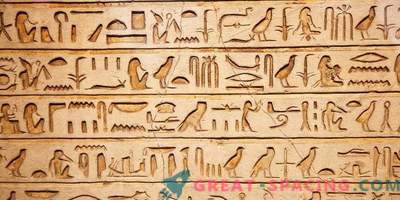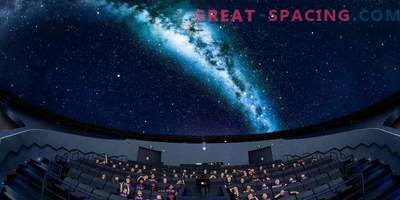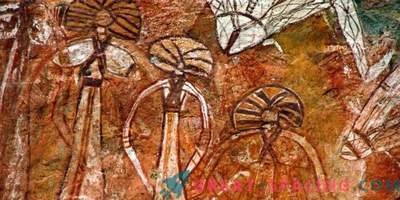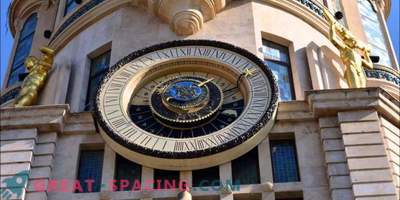Astronomy began long before the appearance of the first telescope and even a lens. Now on Earth you can find many amazing buildings that once served as ancient observatories. Let's take a look at a few examples.
-
El-Caracol

If you go to Mexico, then do not miss the opportunity to admire the surviving ancient observatory created in 906 AD e. It intrigues by the fact that it originated in the Toltec and Maya culture. Yes, the ones that predicted to us the end of the world in 2012 (at least, this interpretation was the most popular).
It is believed that the location on the peninsula Yucatan made it possible to observe the sky without obstacles. Without the use of modern instruments and cosmological knowledge, Mayan astronomers managed to track the movement of Venus and even calculated its cycle - 584 days.
They also knew that 4 Venusian cycles equated to 8 solar years. Records provided a description of 20 astronomical events. Unfortunately, one tower collapsed, hiding and knowledge preserved in it. Interestingly, there is an unusual asymmetry in the building itself. It is believed that this was done intentionally to observe the movement of celestial objects.
-
Gosek circle

An unusual type of observatory seems to be a building in Goseck (Germany). In fact, we have several concentric ditches, whose diameter reaches 75 m. There are also paling rings and gates installed in special places. For the first time the construction was found in 1991, but it is believed that it was created in 4900-4700. BC er and actively used for about 300 years. There is an opinion that the creators are representatives of the Middle Danube culture (nakolchatoy ceramics).
Scientists believe that the building used in astronomical research, but there is no exact data about exactly what they were watching. Some people think that this is a kind of lunar calendar. And others say that before us is the solar observatory, fixing the summer and winter solstices. At the excavation site, we managed to find an ancient disk, which depicted ancient ideas about space.
-
Stonehenge

Without this mysterious structure, we could not do without the list. Now included in the UNESCO list and is considered the main attraction of the county Wiltshire (England). It is difficult to accurately name the date of creation. The fact is that the construction was carried out by many generations of people, where each time new details were added to the already existing stone structure. But the first stones could lay another 3000 years BC. e.
Stonehenge is credited with many uses. Some people think that this is the former ritual temple of the Druids. Others believe that this is a kind of portal for traveling to other universes and parallel worlds. The idea of an ancient observatory began to develop Norman Lockyr.
He believed that such buildings were created in special places for calendar observations, because here they included visual lines used by Celts (they divided the year into 8 parts). Lockyer even developed a theory of the existence of the caste of Druid astronomers, who were considered to be the most important members of prehistoric society. Archaeologists were hostile to this idea, but in 1963 astronomical use of Stonehenge was confirmed by Gerald Hawkins using a computer program that examined the location of the stones. Many are inclined to believe that this observatory was tracking lunar eclipses. Although in 1995 astronomer Duncan Steele tried to promote the idea that Stonehenge is capable of predicting serious cosmic catastrophes.
Postscript
For a long time, scientists did not believe that such ancient structures could serve as astronomical observatories. After all, people of that time were perceived as barbarians. However, all the facts speak precisely in favor of the scientific, rather than the ritual purpose of the structures. It remains only to be surprised that the ancient people were advanced not only in terms of cosmology, but also learned how to create quite complex structures.











































